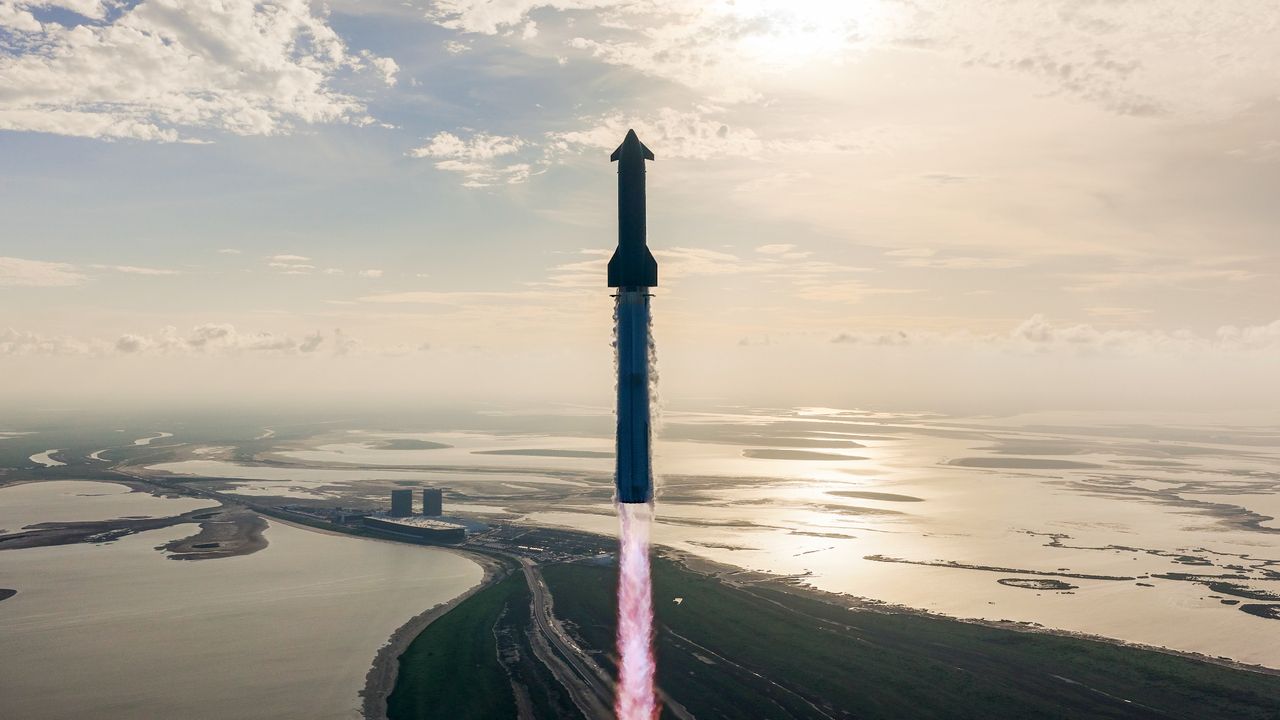Science
SpaceX’s Starship Achieves Major Milestones in Flight 10 Test

SpaceX’s Starship completed its latest test flight with significant success, marking a major step forward in the development of this fully reusable rocket. The launch took place at 19:30 EDT (23:30 GMT) on August 26, 2023, from SpaceX’s Starbase in South Texas. This was the tenth test mission for Starship, and according to the company, the vehicle met every major objective set for the flight.
The mission’s accomplishments were detailed in a post-launch update from SpaceX, which stated that the flight provided critical data to inform the designs of the next generation of Starship and Super Heavy. The robust performance of the rocket is seen as pivotal in fulfilling the long-standing vision of SpaceX founder and CEO Elon Musk to facilitate human settlement on Mars.
Flight 10 was particularly significant given the challenges faced by Starship in previous test flights. The last three missions, conducted in January, March, and May of 2023, ended prematurely for the upper stage. During those flights, known as Flight 7 and Flight 8, the upper stage exploded shortly after liftoff, while Flight 9 resulted in a loss of control during reentry. Additionally, an explosion during a test in June destroyed another Ship, necessitating the preparation of a new vehicle for this mission.
Despite these setbacks, Flight 10’s outcome was promising. The Starship returned safely from its mission, completing a controlled splashdown in the Indian Ocean, approximately 66.5 minutes after liftoff. Although some parts of the Ship were lost during reentry, the overall performance was deemed a success, as the vehicle remained mostly intact until shortly after hitting the water.
SpaceX intentionally removed some heat shield tiles during this test to gather data on the rocket’s performance under stress. The company reported that Starship was able to collect vital information that will influence future designs.
Prior to splashdown, the mission achieved several key milestones. Starship successfully deployed payloads consisting of eight dummy Starlink broadband satellites, a first for any Starship flight. Furthermore, the upper stage briefly re-ignited one of its engines in space, demonstrating a capability essential for operational flights. This was only the second time such an event occurred during a Starship mission.
The Super Heavy booster also performed well on this flight. After separating from the upper stage, it navigated successfully to its designated splashdown zone in the Gulf of Mexico. Unlike its previous flight, where it broke apart during the landing burn, Super Heavy completed the burn successfully. The booster intentionally disabled one of its three center engines during the latter part of the descent, showcasing its adaptability and enhancing the rocket’s capabilities for future missions.
SpaceX emphasized that the success of Flight 10 will continue to be assessed based on the data gathered and the lessons learned throughout the test campaign. The company remains committed to pushing the boundaries of vehicle capabilities while generating excitement in the aerospace community.
As SpaceX moves forward, the insights gained from this flight are expected to shape the future of space travel and the ambitious goal of making life multiplanetary.
-

 Technology5 months ago
Technology5 months agoDiscover the Top 10 Calorie Counting Apps of 2025
-

 Technology2 weeks ago
Technology2 weeks agoOpenAI to Implement Age Verification for ChatGPT by December 2025
-

 Health3 months ago
Health3 months agoBella Hadid Shares Health Update After Treatment for Lyme Disease
-

 Health3 months ago
Health3 months agoAnalysts Project Stronger Growth for Apple’s iPhone 17 Lineup
-

 Health3 months ago
Health3 months agoErin Bates Shares Recovery Update Following Sepsis Complications
-

 Technology5 months ago
Technology5 months agoDiscover How to Reverse Image Search Using ChatGPT Effortlessly
-

 Technology3 months ago
Technology3 months agoElectric Moto Influencer Surronster Arrested in Tijuana
-

 Technology2 months ago
Technology2 months agoDiscover 2025’s Top GPUs for Exceptional 4K Gaming Performance
-

 Technology5 months ago
Technology5 months agoMeta Initiates $60B AI Data Center Expansion, Starting in Ohio
-

 Technology5 months ago
Technology5 months agoRecovering a Suspended TikTok Account: A Step-by-Step Guide
-

 Health5 months ago
Health5 months agoTested: Rab Firewall Mountain Jacket Survives Harsh Conditions
-

 Lifestyle5 months ago
Lifestyle5 months agoBelton Family Reunites After Daughter Survives Hill Country Floods





















